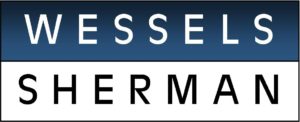Protecting Employers Since 1985
May 2011
By: Walter J. Liszka, Esq.
Since the enactment of the Immigration Reform and Control Act of 1986, which occurred over two (2) decades ago, there have been numerous approaches to the government’s enforcement of Form I-9 compliance. Under prior administrations, specifically the Bush administration, it was the goal of the Immigrations and Customs Enforcement Officials, who are now part of the United States Department of Homeland Security, to enforce immigration control by taking into custody a vast number of unauthorized workers, interrogating them and after establishing that they were undocumented workers, deporting them to their countries of origin. Little effort was made to stop hiring by employers. This concept has substantially changed under the context of the Obama administration. It is the intent and interest of the Obama administration to target employers who are hiring illegal or unauthorized employees and penalize those employers with fines to stop the employment of undocumented employees. It is within this context that there has been a substantial increase in the scrutiny by the government of the employer’s compliance with the Form I-9 which is required for any individual who has been hired on or after November 7, 1986 regardless of their citizenship.
It is the obligation of any employer for any individual hired since November 7, 1986 to require that a Form I-9 be adequately and legally filled out to establish the identity and work authorization of the involved individual. There are three (3) specific sections to the Form I-9. It is the responsibility of the involved employee to fill out correctly and legibly the information in Section 1 of the Form I-9. It is the responsibility of the employer to correctly and legibly fill out the information in Sections 2 and 3 of the Form I-9.
A new employee has three (3) business days from the employment start date to provide the necessary documentation to establish his/her identity and employment authorization. While there has always been some confusion or misunderstanding as to when that three (3) business days commences to run, it is the suggestion of the author that the three (3) business days concept commence to run on the date of hire as the first (1 st) day for the providing of information.
Since employers are responsible for accurately completing the information in Sections 2 and 3 of the Form I-9, although the Immigration Reform and Control Act does not require, but does allow employers to make copies of the documentation presented by the employee to substantiate identity and work authorization, it is the suggestion of the author that copies of the documents presented by the employee and accepted by the employer to establish identity and work authorization be made of those documents and that they be attached to the involved employee’s Form I-9. Having the copies of the authorization documents readily available and attached to the Form I-9 will go a long way to establishing in any Government Audit that the employer has attempted to comply in good faith with the I-9 verification process.
In any I-9 Audit, Federal Agents and/or Auditors will inspect the Form I-9 documentation. The purpose of this inspection is to identify areas of concern that may lead to potential criminal prosecution or, in the alternative, substantiate substantive or technical violations by the employer in the Form I-9 record. The Federal Government Auditors must identify and provide employers at least ten (10) business days to correct “technical violations” of the I-9 Form. If the technical violations are not corrected within that ten (10) day time frame, the employer can be subjected to fines. Some examples of technical violations are:
- Assure that the individual filling out the I-9 has provided her maiden name when required and their address and birth date in Section 1.
- Assure that the individual dates the execution of Section 1 as of the time the employment begins.
- Provide the document title, any required identification numbers, and expiration dates of proper List A documents or proper List B or List C documents, but only if legible copies of the documents are retained with the I-9 Form and presented as part of the inspection.
Examples of “substantive violations” of the I-9 process, which automatically expose the employer to fines are:
- Lack of preparation of a Form I-9 for required employees hired after November 7, 1986.
- Assure that an individual checks the appropriate box in Section 1 attesting to whether he/she is a citizen or a natural of the United States, a lawful permanent resident, or an alien authorized to work for a specific date. That alien authorized to work provides his/her Alien Number in Section 1 if that Number is not provided in Sections 2 or 3 or a legible copy of the document is not retained with the I-9 Form.
- Review and verify that a proper List A document or proper List B or List C document have been provided.
- Appropriate execution of the attestation section of Section 2 and the required execution by the employer of Section 3.
Employers may be subject to substantial fines for substantive and uncorrected technical violations and it is within the discretion of the United States Immigration and Customs Enforcement Group to determine the amount of the fine and to also determine whether in certain situations, an employer has knowingly hired or continued to employ unauthorized workers, which may suggest criminal prosecution or debarment if the employer is a Federal Contractor. Simply stated, accuracy is extremely important in the compliance with the Form I-9 requirements. It is an absolute necessity that there be close attention paid to detail in the proper execution of Sections 1, 2, and 3 of the Form I-9 and that diligence be exercised by both the completing employee and employer to maintain the accuracy of the Form I-9.
Questions? Contact any Wessels Sherman Attorney.
Contact us at any of our four Midwest locations
The Midwest's Premier Labor and Employment Law Firm


Schedule your confidential consultation
Contact Wessels Sherman if you would like to speak with one of our experienced labor and workplace attorneys, contact any of our four office locations and schedule a consultation.




